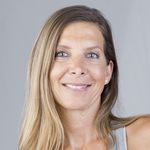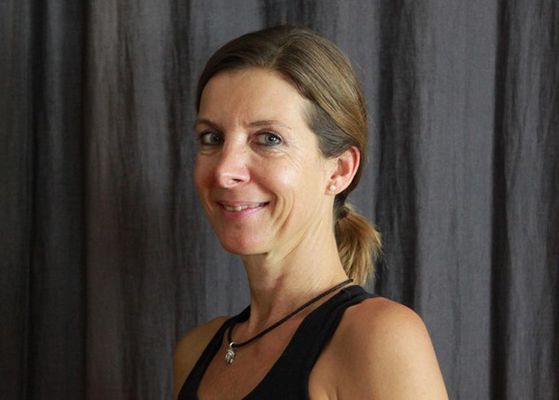
Sabine: Birgit, you have been practicing yoga for almost 15 years. What brought you to the practice?
Birgit: My yoga journey began in 2002. Our three children were all in school and after many intense years at home with them I was relieved to have some time and space to focus on my needs as well. I had a couple of choices to make. One major decision I had to make was whether or not I would return to working in the travel industry, or if perhaps instead I would try something new. Thanks to a tip from a friend, I signed up at the Frauenakademie in Stuttgart, a women-only study program intended for women who have taken time off to care for family, who were looking for inspiration to do something different with their lives, or who wanted to stay mentally active after their retirement. This program is really a great way to find what inspires you because it is so diverse and engaging. There were many theoretical courses available such as: Women's Role in Society, Politics, Psychology, Philosophy and Literature; as well as practical courses such as rhetoric and voice training.
During this time I became friends with a fellow student whose charisma, calmness and approach to life and its challenges really impressed me. She had been practicing yoga for quite some time and was so enthusiastic about it. She regularly went on yoga retreats and I had the chance to take a class with one of her teachers. I did not know anything about yoga before that, but by the end of that weekend I knew that there was something key in the practice for me. I felt relaxed in a way that I hadn't felt for a long time, the pleasant atmosphere this weekend was fascinating, and I had a feeling of being really within myself through a truly embodying practice. I guess you could say it was love at first sight: the fascination, enthusiasm, and an intuitive sense that yoga was the right thing for me. And to this day it hasn't changed. On the contrary, the more you experience, the deeper the practice touches you and the clearer your understanding that yoga can heal and has the potential to bring us to a state of contentment.
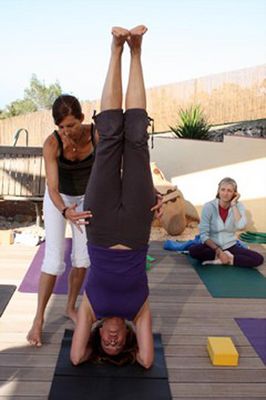
Sabine: So in other words you knew after this first contact with yoga that you wanted to be a yoga teacher and immediately signed up for a teacher training? Or did you start off just practicing for yourself?
Birgit: Yeah, you could almost say that I jumped right in. At that point I still had no idea how broad a topic yoga was, not to mention the philosophy and even the number of styles of practice that existed. My thirst for knowledge was drawing me to learn more and more about the background and philosophy of this practice. Following the weekend course I started looking immediately for teacher trainings. The concept of teaching itself was not really so present as my drive to learn more.
Sabine: Study, teacher training and family - that sounds like a lot to take on at once. Even with the children in Kindergarten and school, can it sometimes be difficult to maintain the discipline to roll out the mat and practice? With one of the kids home sick, the second spilling the cereal bowl all over the table at breakfast and the third having forgotten their gym bag at home: how can you find inner peace?
Birgit: True, that was a very intense and action-packed period of my life, but at the same time a very creative and exciting one. My yoga practice was an integral part of the day and in these turbulent and ever-changing times, I was able to stay focused, remain calm, balanced and relaxed. But I think this is really the same anytime you do something with passion and tapas. If your motivation comes from deep within and you intuitively know it's the right thing, you are inspired and engaged whenever you deal with this topic and it will lead to even more santosha, or contentment, and deep gratitude. That energy you have when you've found what really interests you. I do not mean that only intellectually, but a feeling that comes from really deep within. Therefore, this time in my life was miraculous, even though I had taken on a seemingly hefty workload. The discipline of getting on the mat to practice tended to bring structure to my everyday life to the point that everything and everyone had their place in it.
Sabine: You opened your own studio relatively quickly within this time. How did it happen? Did you need time to plan and think this out? Were there doubts as to whether or not everything would work out - or did things fall right into place for you?
Birgit: At first, I had doubts as to whether the time was right and whether I could do it, as I was at that point still in the middle of my yoga teacher training and had just begun to teach lessons. But on the other hand, the chance to take over the studio was of course great and unique. So after some sleepless nights and considering pros and cons of accepting to take over or waiting for the next opportunity to arise, I was convinced that it was the right time and I took on the challenge. I had the support of my family and friends, as well as a colleague who took over the studio with me. These were great elements to start with, and my business partner and I still work well together and find it an enriching experience to run the studio. In June 2017 it will be 10 years that we are in business together.
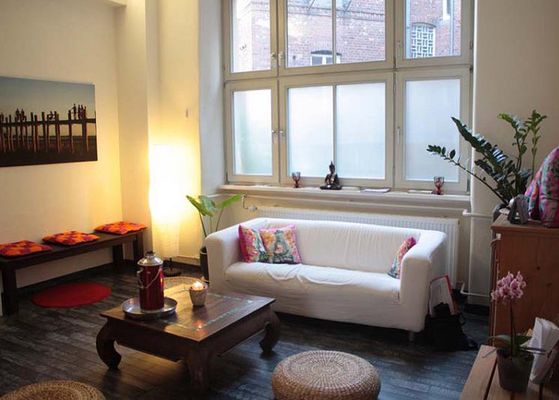
Sabine: What were your yoga lessons like at the beginning? What style did you teach and how often?
Birgit: Our first lessons were Sivananda-based Hatha yoga lessons, Vinyasa and Iyengar-Style classes. I had done a variety of different additional trainings for different topics such as Spirit Yoga in Berlin, Pre- and Postnatal Yoga and workshops for Forrest Yoga, i.e. Power Yoga. From the beginning we offered different level classes, along with Kids yoga and private lessons. In our first studio we only had a small space that could accommodate up to 12-14 people. We were a team of three teachers and were all teaching every morning and evening. On the weekends, we taught workshops, retreats and weekend immersions.
Sabine: How did things go from there to how they are now? It seems that your project has really taken flight.
Birgit: After four years, we outgrew the space and we were fortunate to be able to rent new, larger rooms in 2011. We added on new classes, and the teacher team grew. At the time I practiced yoga in the tradition of B.K.S. Iyengar, but also regularly attended various workshops and yoga teacher training sessions of other yoga styles. With Iyengar yoga, the precision and the alignment with support of props was intriguing and I loved that so many body types could participate in a class because of it. On the other hand, I love a dynamic and demanding practice. I had not really found "my" style at the time.
Today, we are a great team of teachers and instructors, offering a variety of courses and workshops for every type of student: AYI Courses, Vinyasa Yoga and Kundalini yoga, Restorative yoga, Yin yoga, Pre- and Postnatal yoga, Kids yoga , Family yoga, private instruction and yoga classes in the workplace. We also offer regular workshops with guest teachers as well as Ayurvedic consultations with our Ayurveda doctor Dr. de Mel, and Ayurvedic massages. Our network of instructors and the connections we have with teacher training institutes is constantly growing and we are very happy about this.
Sabine: That's an impressive range of classes and services. At the same time, it seems to me as if Ashtanga has played a smaller role for you in the early days. Considering that you are now an AYI® instructor, there must have been a decisive shift. When and how did this happen?
Birgit: You are right. I had very little exposure to Ashtanga at first, and I held some of the typical prejudgements about the practice. Namely that it was too monotonous and boring.
The shift in my perception of the practice came when I participated in the teacher training program led by Anna Trökes and Ronald Steiner. For the longest time I had wanted to find a more complete training where I could be recognized by the BDY, the organization representing yoga teachers in Germany. One day I saw the advertisement for an BDY-authorized teacher training being offered in Stuttgart. That was extremely practical for me. Not only was it close to home, but I could work it in with my daily responsibilities without having to take time off. I was also excited to get to know Anne better, as I had read quite a bit about her and had heard some great things. I didn't know much about Ronald at that point.
Our first meeting for the four-year teacher training was in 2010 in Stuttgart. It was described as an Ashtanga-based training. We were the first BDY-recognized teacher training group with the Ashtanga specialization. Within the organization, the Ashtangis were seen as exotic.
Sabine: It seems clear that it wasn't only the teacher trainers that convinced you but also the style of yoga. What do you value most about Ashtanga in the AYI® format?
Birgit: These four and a half years of study were intense and deeply inspiring. Much of what I learned in that time has shaped who I am today, especially in my teaching and presentation styles. Ashtanga is no cake-walk. It's definitely not for lazy people, I once heard. I can't recall who that came from, but it is true. The practice is really challenging. There's no cool music to zone out to, theres no fun and games with creative and playful dance-based movements. It's just you, your breath, your practice of movement and being one with yourself. That's what is really tough about the whole practice, but this is where it becomes fascinating. In order to practice Ashtanga you have to get past yourself and be real with yourself. For me this translates to being able to let go of resistance to things, and to keep my ego in check. With AYI you have to take a good hard look at who you are. Then what you do with that is up to you. There are lots of different yoga styles which have similar goals, but I feel that AYI is pure. You can't turn away or tune out. And that is what I like about it. I can really see who I am through my practice with all my resistance, quirks and habitual patterns. I can observe how things develop and change daily on the mat, when I look at myself in the mirror. Over time you recognize yourself and you realize what has changed. I find a practice that reflects daily life very valuable. And just for that reason it is impossible for this practice to be monotonous and boring. The challenge is realizing the fine details of what is happening behind the scenes and then to experiment with new patterns. Also, the discipline of sticking with something challenging and letting go of expectations and tendencies to resist. With this practice you keep going, and you see what happens.
What I also greatly appreciate is the AYI Method, which offers beginners a solid foundation and which allows them a way to start practicing independently from the start. The same applies for people with physical limitations. These folks are able to practice with appropriate modifications and then they can practice in their own way on their mat working in the same way as anyone else could. What is really nice is that in a Led Class, we can offer a wide array of vinyasa options specifically to this point. Also, that in the framework of a Mysore lesson we have the chance to offer therapeutic sequences. I think it is really amazing how the tradition of Ashtanga Vinyasa is merged with the newest scientific knowledge and modern methods, which allows the practice to evolve with us while maintaining its roots. I am so grateful and pleased to be able to share this information and my experiences with future groups, especially the upcoming AYI Inspired teacher training which begins in January 2017.
Sabine: At the same time that you were participating in the Ashtanga teacher training, you completed a yoga therapy training with Dr. Hedwig Gupta in the areas of orthopedics, neurology, psychosomatics and internal medicine. Would you consider yoga therapy as one of your main foci? How does the Ashtanga practice coincide with therapeutic yoga and what role does this combination play in your teaching?
Birgit: I view practicing yoga as therapy in itself. When I'm at home on the mat, my practice is therapeutic for me, whether I'm "sick" or not. I stay healthy with yoga, I develop positive habits of self-care, my mental clarity and a sense of spirituality. When you teach yoga, you are working with more than the outer shell of the body, and for that reason when you work with the entire person a therapeutic practice emerges. For me I would definitely say that yoga therapy is a focus.
I have students who have suffered from burnout from mental stress and depression, as well as people with cancer or who have had a stroke. Yoga is a great way to establish self-determination and to empower people who have spent long periods of time in the hospital for example. The ability to do something good for yourself is a huge step to being healthy and whole again. Yoga offers a variety of options to work holistically with the person, be the issue physical or mental. This work takes place either in private lessons or in group lessons. The AYI Method is an excellent way for anyone to develop an individual practice for home, in the studio or with a teacher. The therapeutic sequences blend perfectly into a Mysore class and allow the student to develop a personalized and meaningful practice.
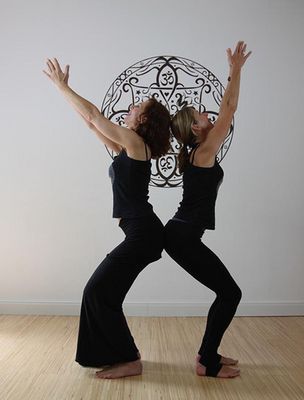
Sabine: Are there other important aspects and how are they woven into your lessons?
Birgit: Alongside my AYI courses I offer pre- and postnatal courses, as well as restorative, Hatha and private lessons. Since 2015 I have been giving a one and a half day training on pre- and postnatal yoga for teachers and interested students.
At the same time I continue learning. Since March 2016 I have been participating in an Ayurveda themed teacher training with Dr. Gupta. I find the combination of yoga and ayurveda fascinating and I would like to integrate more ayurvedic concepts in my teaching. Dr. Gupta will also be teaching a module for the AYI teacher training in Stuttgart, and I am totally excited about it.
Sabine: Speaking of AYI® teacher training, you have already mentioned that you will be offering this teacher training at your shala Yoga Süd in January 2017. What led you to the decision to lead a teacher training alongside offering regular yoga classes?
Birgit: I have wanted to do this for more than ten years now, as I was still studying in my first teacher training. That was in 2006. I sat there in the group and thought suddenly that that is exactly where I wanted to be later on, leading a teacher training. Since 2013 I have been hosting and supporting teacher trainings at my studio. I have also taught three groups of trainees for a 200-hour AYA yoga teacher training. Being a teacher trainer is a really beautiful role to have, which is challenging but worth every moment of the experience. To guide people on their journey is a gift. It is so wonderful to be there and observe how people grow and flourish within their new found selves, as well as to see them uncover their inner potential and to begin to really live fully. I am so thankful to offer my knowledge and experience and to see how these offerings can be useful for my trainees. I bring my 13 years of experience with yoga, plus my work at the studio, my classes and everything which has come to pass along my journey into the room when I teach a group of yoga teacher trainees. What is amazing is that this also deepens my personal awareness regarding each tidbit that I pass on.
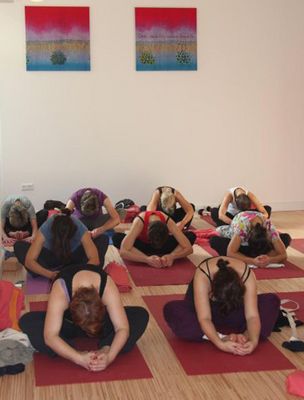
Sabine: What is a main point that you want to bring across to your students that is of particular importance to you?
Birgit: "You have committed to show up and be present in every moment of your life.“ I'm not really sure who said that or where I read that quote, but it is a phrase that has guided me over the years and really seems to clarify what yoga means to me.
Every moment where you are conscious and present is a gift. Each mindful breath is a revelation. Because I know that in those moments I am really embodying my true nature, and I am at that point equally connected with everything around including my hopes, my dreams and my potential. Moreover, I can bring that awareness into the concrete world around me and make those things possible. Even if my situation at the moment isn't optimal. You can always choose. We can change our perspectives on things. We can choose which lenses we use to see the world. Yoga is responsibility to one's self, for the outcome of one's own life as well as the lives of the people around us.
Having this commitment in every moment in life also means that you should use your time wisely. If you can't change something in this moment, you have to learn to accept it as it is. Perhaps you can even be content with the moment by looking at things from a new point of view. I want my students to remember that life is beautiful. Even in the most challenging times. Each challenge is a chance to learn and grow. This is what we practice on the mat. And with contentment, enthusiasm and love for life to boot. We can also change our thought patterns, it's sometimes hard to imagine but our brains are malleable and our reactions and actions can be reformed. I want students to know that it is worth it to set out on this journey inward and to take on the challenge with an open mind, an open heart and curiosity through life to travel. Yoga supports us on this path and offers us the stability, endurance, drive and flexibility to keep going. Namaste.
Sabine: I don't think there's a better way to summarize yoga. Many thanks for the interview and good luck with your new teacher training!
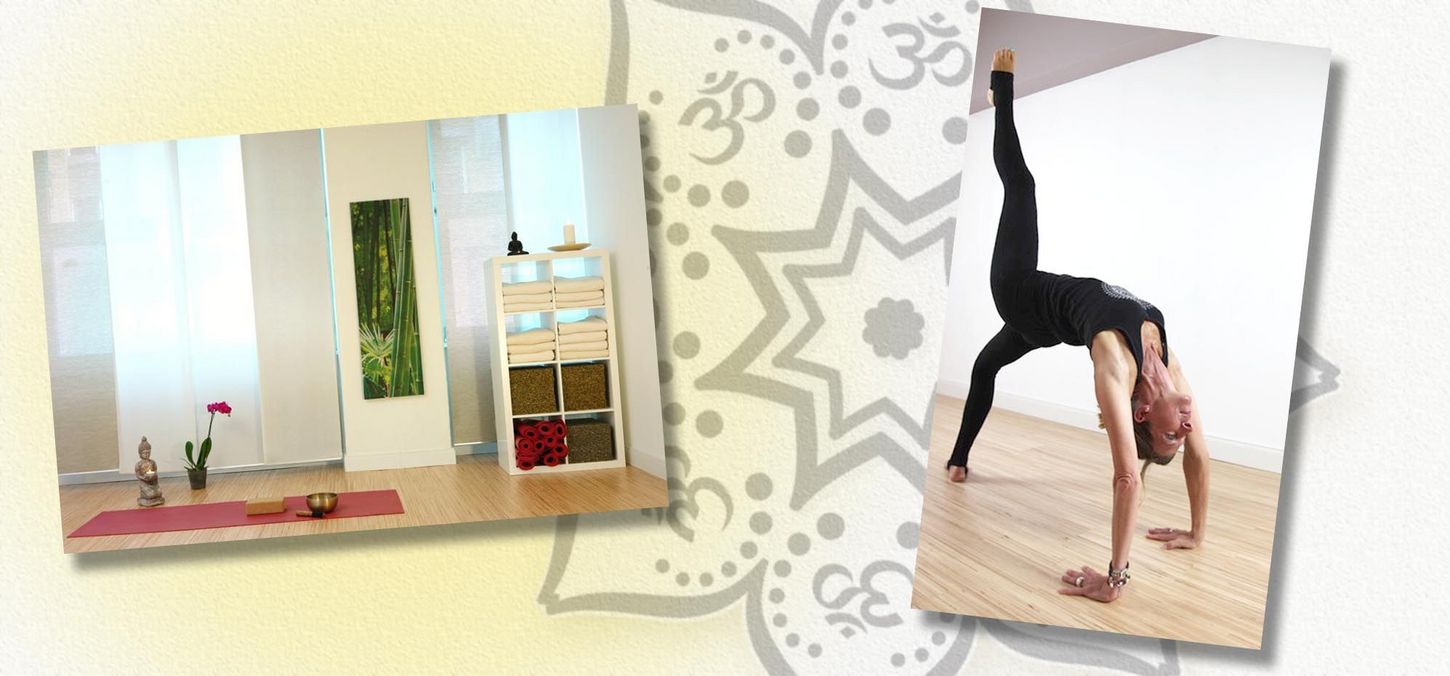

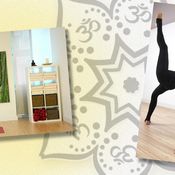
 Birgit Hortig
Birgit Hortig
 Dr. Sabine Nunius
Dr. Sabine Nunius
 Birgit Hortig
Birgit Hortig
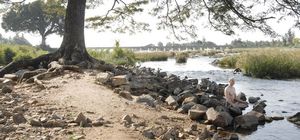
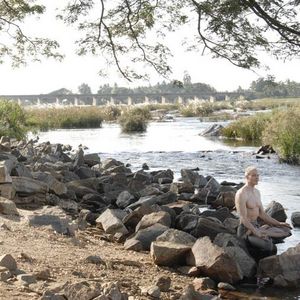
 Dr. Ronald Steiner
Dr. Ronald Steiner
